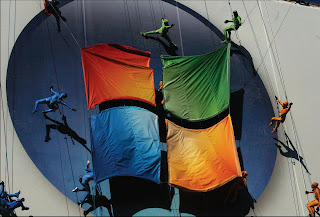Meanwhile, the effluents haven’t spared Tirupur city either. Since the ground and surfacewater are polluted, drinking water has become undrinkable. And it’s not only pollution, the groundwater level has plummeted to 800 feet below. One bitter example is that even the colour of the water that one gets from tender coconuts in these areas have changed. Outraged by the increasing impact of the pollution, the villagers surrounding Tirupur decided not to allow the units to take waterfrom their wells. The industrial units have to buy water from outside faraway places at a higher price. Some have gone to the extent of buying farmlands with wells to draw water and there sure are protests against it.
The fight against the pollution is going on. The court has ordered closure of textile and dyeing units until they set up treatment plant with reverse osmosis process. Now those units are setting up treatment units. As per government’s order, they have to complete it before July 2007. M.Balamurugan, Founder of an NGO named Kurinji Foundation states to B&E, “The dyeing units will construct the treatment plants and there’s no doubt about it. But will they run them considering that the running costs are so high? They will keep them as a show piece. What is required is continuous monitoring. We documented these cases in our short film Noyyal- Tho laintha thadangkal’ (Noyyal- the lost way). In the downstream region of Noyyal, many have skin diseases & other miseries.”
He adds another point, “Instead of accusing the dyeing units, in reality we have to point our fingers at the exporters. They don’t raise their payment to the dyeing units according to the rise in the cost of dyeing as treatment plants are involved. They feel their margin will decrease.’’ Well, profits are good; but at what costs?! Sure, dying never got more sinful!
 Management. “In this, we try to identify the employees who are at the top of the performance ladder. The criteria for this are both performance and potential – Adi Godrej is involved with this and once a year we present the talent list,” says Sumit. Communication across channels has been made more effective over the years and despite the best of efforts, attrition issues exist in every organisation under the sun. Sumit reverts, “The way economy is changing, there would be an increasing number of employees willing to move on, and organisations, despite their efforts, would fail to satisfy all.” So the question remains – ‘How has GCPL addressed this menace called attrition, of late?’
Management. “In this, we try to identify the employees who are at the top of the performance ladder. The criteria for this are both performance and potential – Adi Godrej is involved with this and once a year we present the talent list,” says Sumit. Communication across channels has been made more effective over the years and despite the best of efforts, attrition issues exist in every organisation under the sun. Sumit reverts, “The way economy is changing, there would be an increasing number of employees willing to move on, and organisations, despite their efforts, would fail to satisfy all.” So the question remains – ‘How has GCPL addressed this menace called attrition, of late?’























